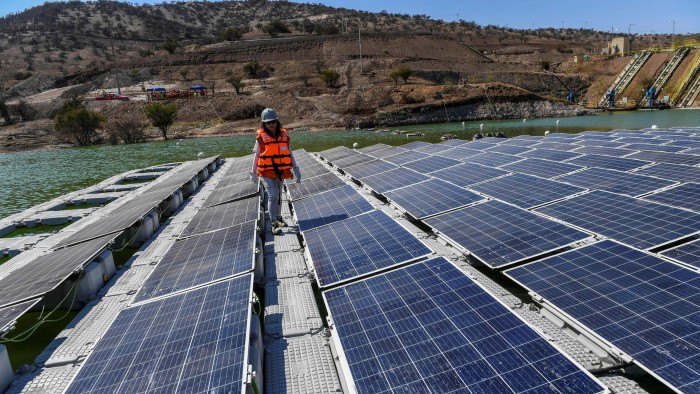Anglo American: Cutifani hands over miner with not-so minor challenges

Roula Khalaf, Editor of the FT, selects her favourite stories in this weekly newsletter.
When Mark Cutifani switched hard hats to lead Anglo American, the miner’s share price rose. Now, almost nine years later, he is handing over his CEO’s safety helmet to Duncan Wanblad, a company veteran. Wanblad inherits a $37bn company in decent nick — Cutifani mostly lived up to his early promise. But Wanblad will need to cope with the twin challenges of delivering more growth with fewer emissions.
Cutifani navigated a grim period in 2016 after Anglo American piled on debt as commodities hit the skids. But by shedding almost half the 68 assets in situ when he arrived, he has created a smaller portfolio of more economically viable mines. The volume of Anglo’s copper equivalent production is up 10 per cent over the same period.
Wanblad’s immediate task will be to execute the growth plans and decarbonisation commitments laid out by his predecessor. To do so, he will need to keep on board well-regarded lieutenants such as Bruce Cleaver, boss of Anglo-owned De Beers, and technology director Tony O’Neill.
There are other challenges. Costs are mounting at the Yorkshire fertiliser project taken on through the acquisition of embattled Sirius, a project Wanblad championed. Production remains a way off.
Real estate woes and decelerating economic growth in China have depressed the price of iron ore. True, Anglo has less exposure to this than UK-listed peers Rio Tinto and BHP. But the mineral still contributes more than a third of ebitda.
Iron ore is also responsible for some of the highest carbon emissions over its life cycle, thanks to the carbon-belching business of steel making. Anglo, which released its annual climate report last week, has committed to carbon neutrality across its operations by 2040. It has, more or less, extricated itself from thermal coal and the upcoming Yorkshire plant will produce environmentally friendly polyhalite fertiliser.
Scope 3 emissions, covering end users, are a tougher proposition — almost three-quarters come from steelmakers. But the London and Johannesburg-listed group has pledged a 50 per cent cut by 2040.
Anglo’s share price has outpaced peers since Cutifani took the helm; in the past year, only Glencore has stormed ahead. Yet despite its more diversified portfolio it trades on a lower forward ebitda multiple than the big Australian mining duo. Were he to pull off a re-rating of the stock on top of his other challenges, Wanblad would score a veritable (hard) hat-trick.
Our popular newsletter for premium subscribers is published twice weekly. On Wednesday we analyse a hot topic from a world financial centre. On Friday we dissect the week’s big themes. Please sign up here.
Comments